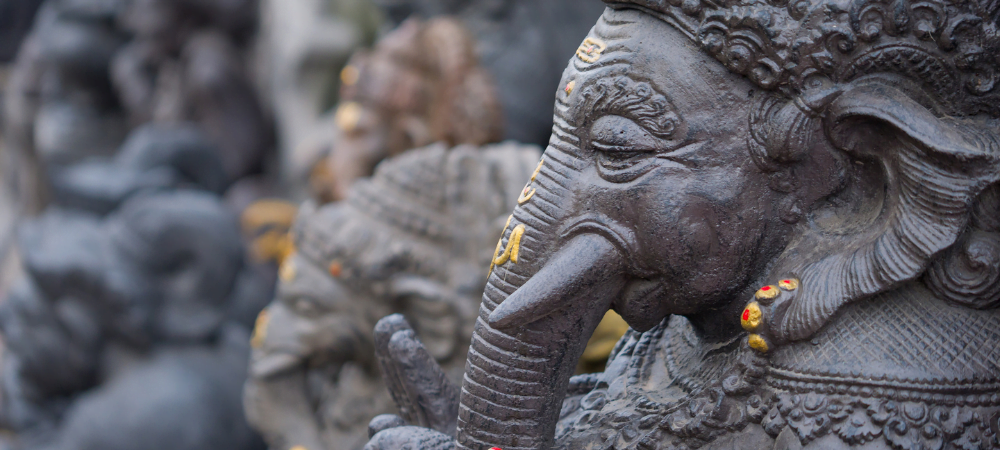The Art and Culture Scene of Seminyak
Seminyak isn’t just a luxury beach destination – it’s also one of Bali’s most vibrant hubs for art and culture. From hidden art villages and contemporary galleries to traditional craft workshops and historic temples, Seminyak offers a rich cultural experience for travellers who want to dive deeper.
In this blog post, we’ll take you on an enchanting journey through Seminyak’s thriving art scene and rich cultural heritage, inviting you to dive deeper and uncover the town’s soul, which lies beyond its sun-soaked beaches and luxe retreats. Prepare to be inspired by the captivating blend of old and new, tradition and innovation, that makes Seminyak an irresistible destination for culture and art enthusiasts alike.
Key Takeaways
- Seminyak is home to a thriving art village, blending traditional Balinese craftsmanship with modern creativity.
- Top galleries like Nyaman Gallery and Biasa ArtSpace showcase a diverse mix of contemporary and local art.
- Hands-on art workshops are available for visitors, including Batik painting, jewellery making, and wood carving.
- Street art and artisan markets add colour and character to the local creative scene.
- Exploring the art village offers a deeper cultural experience, ideal for travellers who want to go beyond beaches and boutiques.
The Art Scene in Seminyak
The island of Bali has long been a magnet for artists, drawn to its unique aesthetic, its vibrant natural beauty, and the ever-present spiritual life of its inhabitants. Seminyak, often touted as one of Bali’s most fashionable districts, is no exception. Here, traditional Balinese art forms blend seamlessly with contemporary expressions, resulting in a dynamic and diverse artistic landscape.
The art scene in Seminyak is as eclectic as it is fascinating. Paintings, sculptures, installations – the array of art forms you’ll find in this bustling town is a testament to the creative spirit of its people and the diverse influences that have shaped it. This cultural melting pot is home to a number of talented local artists who draw inspiration from their Balinese heritage while also embracing global art trends.
Visitors have a plethora of opportunities to immerse themselves in the local art scene. Art galleries, showcasing both traditional and contemporary works, abound in Seminyak. Nyaman Gallery is one such space that offers a diverse range of artwork from emerging and established Indonesian artists. Reservoart Gallery, another noteworthy space, displays an impressive collection of contemporary and abstract art. A stroll down the vibrant streets of Seminyak will also reveal an array of striking street art, further demonstrating the town’s artistic flair.
Yet, the art in Seminyak is not just to be observed; it’s to be lived. The town offers a variety of art workshops for visitors eager to experience Bali’s artistic traditions first-hand. From traditional Batik painting to wood carving and silver jewellery making, there are plenty of opportunities to learn, create, and be inspired.
Whether you are an avid art connoisseur or simply a curious traveller, Seminyak’s vibrant art scene offers a compelling glimpse into Bali’s rich artistic heritage and its innovative present. Each piece of art, each artist, and each gallery carries a story waiting to be discovered, providing a multi-layered and colourful insight into the heart of Balinese culture.
The Cultural Scene in Seminyak
Just as vivid as its art scene, Seminyak’s cultural heritage paints a fascinating portrait of a community deeply rooted in tradition. Balinese culture is an intricate tapestry of age-old customs and rituals, spirituality, music, dance, and craft, all of which are interwoven into the fabric of everyday life in Seminyak.
Understanding Balinese culture begins with recognising the importance of local customs and traditions. Seminyak, like the rest of Bali, is heavily influenced by Hindu philosophy and religious practices, which shape daily routines, social interactions, and significant life events. Visitors can witness these customs during local village temple ceremonies, where offerings, music, dance, and communal feasting signify an intrinsic connection between the spiritual and material worlds.
Not to be missed are the vibrant cultural festivals and events that take place throughout the year in Seminyak. The Galungan festival, which marks the victory of dharma over adharma (good over evil), fills the streets with ornately decorated bamboo poles, called ‘penjor’. The Kuningan festival, celebrated ten days after Galungan, concludes the holiday period with prayers, offerings, and special performances. Nyepi, or the Day of Silence, offers a stark contrast as the entire island comes to a standstill in a day of quiet reflection.
The performing arts hold a special place in Balinese culture, and Seminyak offers plenty of opportunities to experience this first-hand. The rhythmic gong of the gamelan, a traditional music ensemble, provides a melodious soundtrack to the town, while performances of classical dance dramas such as Legong, Kecak, and Barong offer captivating narratives of mythology and moral tales.
Seminyak is also a hub for traditional craft and textile industries, with Batik making, silversmithing, and wood carving playing a significant role in the local economy. These age-old techniques passed down through generations, continue to thrive in Seminyak, producing exquisite works of art that capture the essence of Balinese culture.
Cultural Heritage and Architectural Wonders
A tour of Seminyak would not be complete without a journey through its remarkable cultural landmarks and architectural wonders, tangible embodiments of the town’s historical and cultural legacy.
Begin your cultural exploration with a visit to Pura Petitenget, an enchanting sea temple located at the end of Jalan Petitenget. Steeped in mystique, this centuries-old temple is an important link in Bali’s series of sea temples and an active site of worship, particularly during the temple’s biannual ceremonies. Its intricate stone carvings and serene seaside setting offer a glimpse into the spiritual heart of Balinese society.
A short distance from Seminyak, you’ll find Pura Masceti, a ‘Pura Kawitan’ or ancestral temple of special significance to the Subak (the organisation of rice farmers in Bali). This peaceful temple complex showcases the timeless architecture of Balinese temples, with its multi-tiered meru (towers), intricately carved stone gates, and expansive gardens.
The charm of Seminyak’s architecture extends beyond its temples to its traditional Balinese homes and villas. The concept of ‘Desa Kala Patra’ – meaning a harmonious relationship between humans, God, and their environment – heavily influences Balinese architecture. This philosophy can be observed in the layout of traditional Balinese homes, where different pavilions, each serving specific purposes, are arranged around a central courtyard in accordance with sacred directions. Many luxury villas in Seminyak echo this architectural design, blending traditional elements with modern comforts.
Moreover, Seminyak’s streets are lined with unique examples of ‘Tropical Modern’ architecture, where international design elements are fused with traditional Balinese materials and techniques. These structures, ranging from boutique hotels to shopping complexes, contribute to the dynamic architectural landscape of Seminyak.
Exploring the Seminyak Art Village
Seminyak isn’t only about luxury villas and beach clubs — it also hides a thriving creative hub often referred to as the Seminyak art village. Here, traditional Balinese artistry blends with contemporary design, giving visitors a chance to see both sides of Bali’s creative spirit.
The streets around central Seminyak and Petitenget are dotted with galleries, artist studios, and open-air markets where creativity is on full display. Whether you’re browsing contemporary paintings, admiring handcrafted silver jewellery, or spotting vibrant murals, the town’s artistic flair is never far away.
Highlights of Seminyak’s art village include:
- Nyaman Gallery – A showcase of contemporary Indonesian and Balinese artists, featuring everything from paintings and sculptures to photography and mixed media.
- Biasa ArtSpace – Known for experimental and conceptual works, this gallery presents exhibitions from both local and international creators.
- Studio Perak – A creative workshop space where you can design and craft your own silver jewellery using traditional techniques.
- Street Art & Markets – Around Seminyak’s lanes, colourful murals and artisan markets highlight the energy of Bali’s younger creative generation.
For travellers who want more than just sightseeing, Seminyak offers hands-on workshops in Batik painting, wood carving, and jewellery making. These interactive sessions let you learn directly from local artisans and take home your own handmade creation.
FAQ
What is the Seminyak art village?
The Seminyak art village refers to the cluster of galleries, workshops, and artisan studios in the Seminyak area. It’s where visitors can explore contemporary Balinese art, traditional crafts, and even take part in creative workshops like Batik painting or jewellery making.
Can visitors join art workshops in Seminyak?
Yes, Seminyak offers several workshops where travellers can learn hands-on skills such as Batik painting, silver jewellery design, and wood carving. These workshops are often run by local artisans and give visitors the chance to create their own Balinese-inspired souvenirs.
Which galleries should I visit in Seminyak?
Popular galleries include Nyaman Gallery, which showcases contemporary Indonesian artists, Biasa ArtSpace for modern and experimental works, and Reservoart Gallery for abstract and conceptual art. Each offers a unique glimpse into Bali’s thriving creative scene.
Is street art common in Seminyak?
Yes, Seminyak has a lively street art presence, with colourful murals scattered across its lanes and side streets. Many of these works are created by emerging local and international artists, reflecting Bali’s blend of tradition and modern culture.
How much time should I spend exploring Seminyak’s art village?
Most visitors spend half a day exploring the galleries, markets, and workshops. If you plan to take part in an art class or workshop, allow a few extra hours to fully enjoy the experience and create something to take home.
- Welcome Back To My Villas in Bali - November 17, 2021





